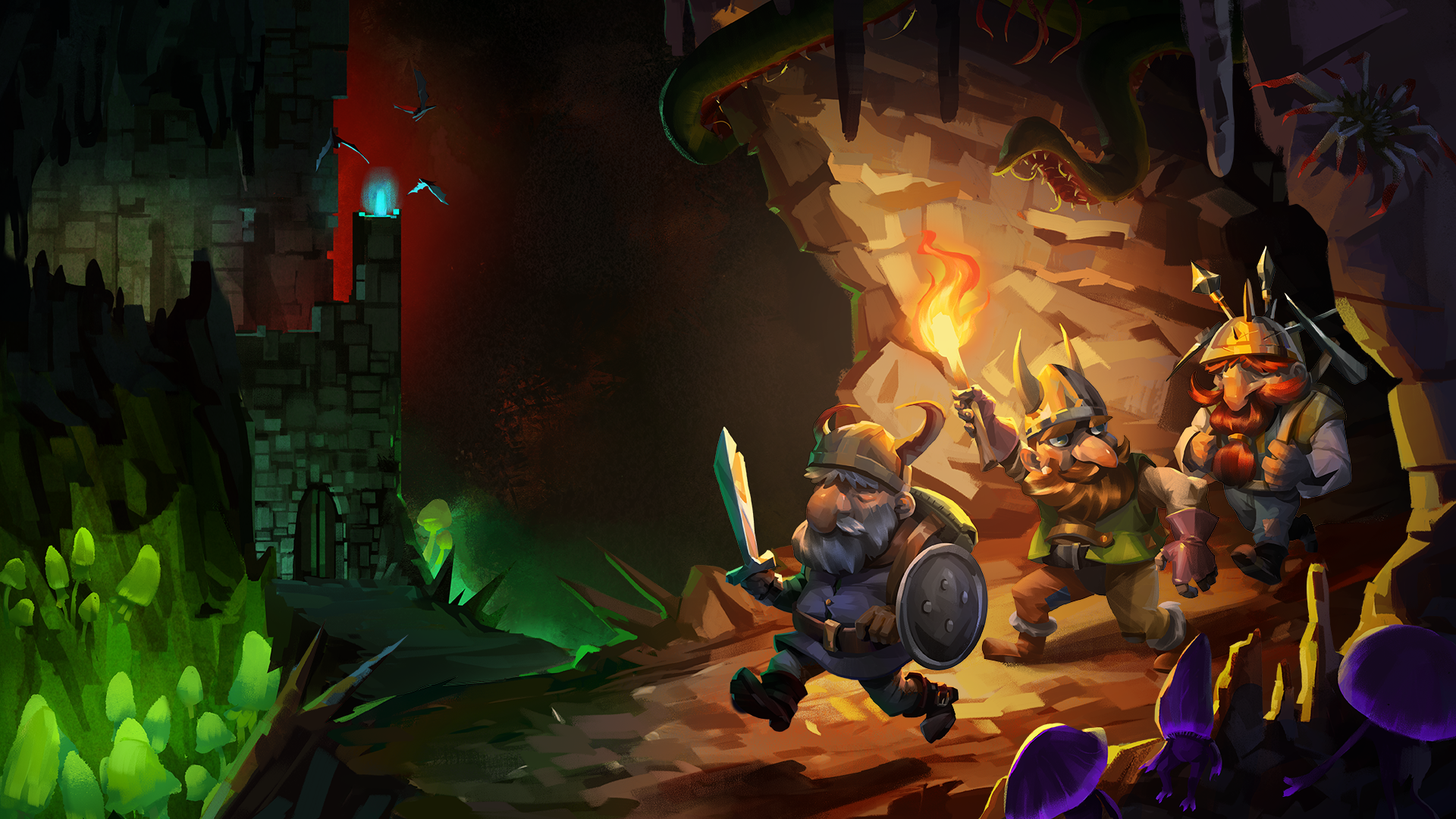Our Verdict
A worthy revision of the legendary settlement sim. Slightly less impenetrable, just as engrossing.
PC Gamer's got your back
What is it? A colony sim masterwork of procedural generation.
Expect to pay: $30
Release date: December 6, 2022
Developer: Bay 12 Games
Publisher: Kitfox Games
Reviewed on: i7 8700k, NVIDIA GeForce 3070 RTX
Multiplayer? No
Link: Steam page
Over 13 years playing Dwarf Fortress, I've seen my share of legends. I've witnessed one-armed dwarven generals strangle dragons as old as time. I've watched in horror as an artisan emerged from months trapped in the caves below my fortress halls, clinging to life just long enough to craft one last work: a puzzlebox of obsidian and bone. Now, I get to see Dwarf Fortress arrive on Steam, the colony sim's emergent storytelling more approachable than it's ever been—but only just.
The ever-evolving life's work of brother developers Tarn and Zach Adams, Dwarf Fortress is entering a new age, shedding its text-based graphics for proper pixels and the basic modernity of native mouse support. Still inscrutable, still magnificent, Dwarf Fortress remains an incomparable treasure trove of procedural mythmaking for those willing to delve its depths.
Striking the earth
At its most basic level, Dwarf Fortress is a settlement sim. With a small group of dwarves, you embark from the Mountainhomes to stake your claim on a plot of distant wilderness. It's up to you to establish a fortress capable of lasting the ages, from the ground up—or down, in the typical dwarven fashion. Winter is only months away. Start digging.
At first, Dwarf Fortress can be deceptively simple. Clunky to control, maybe, but when you're marking out tunnels to mine and trees to chop it seems easy enough. Within minutes you're three menus deep, trying to parse labor details and work duties, assign administrative positions, designate burrows, organize stockpiles of food, gems, finished goods, and precious cave wheat ale.
Meanwhile, your livestock are brawling because you put them in too small a pasture, your lone huntsdwarf is being chased home in a panic after antagonizing a giant capybara with their last crossbow bolt, and your best farmer's in a depressive spiral over your dining hall's lack of chairs. And that's all before your first goblin siege.
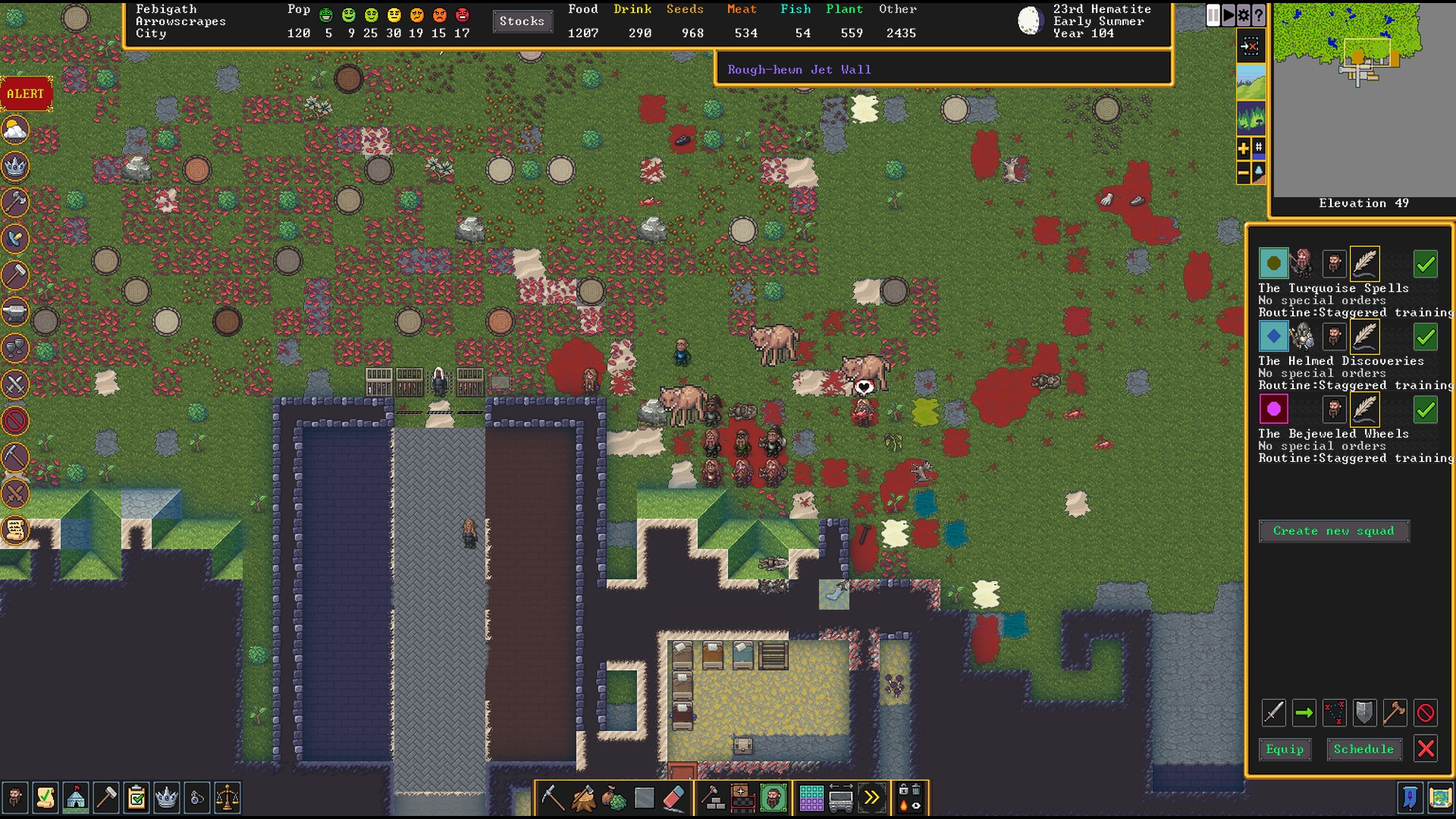

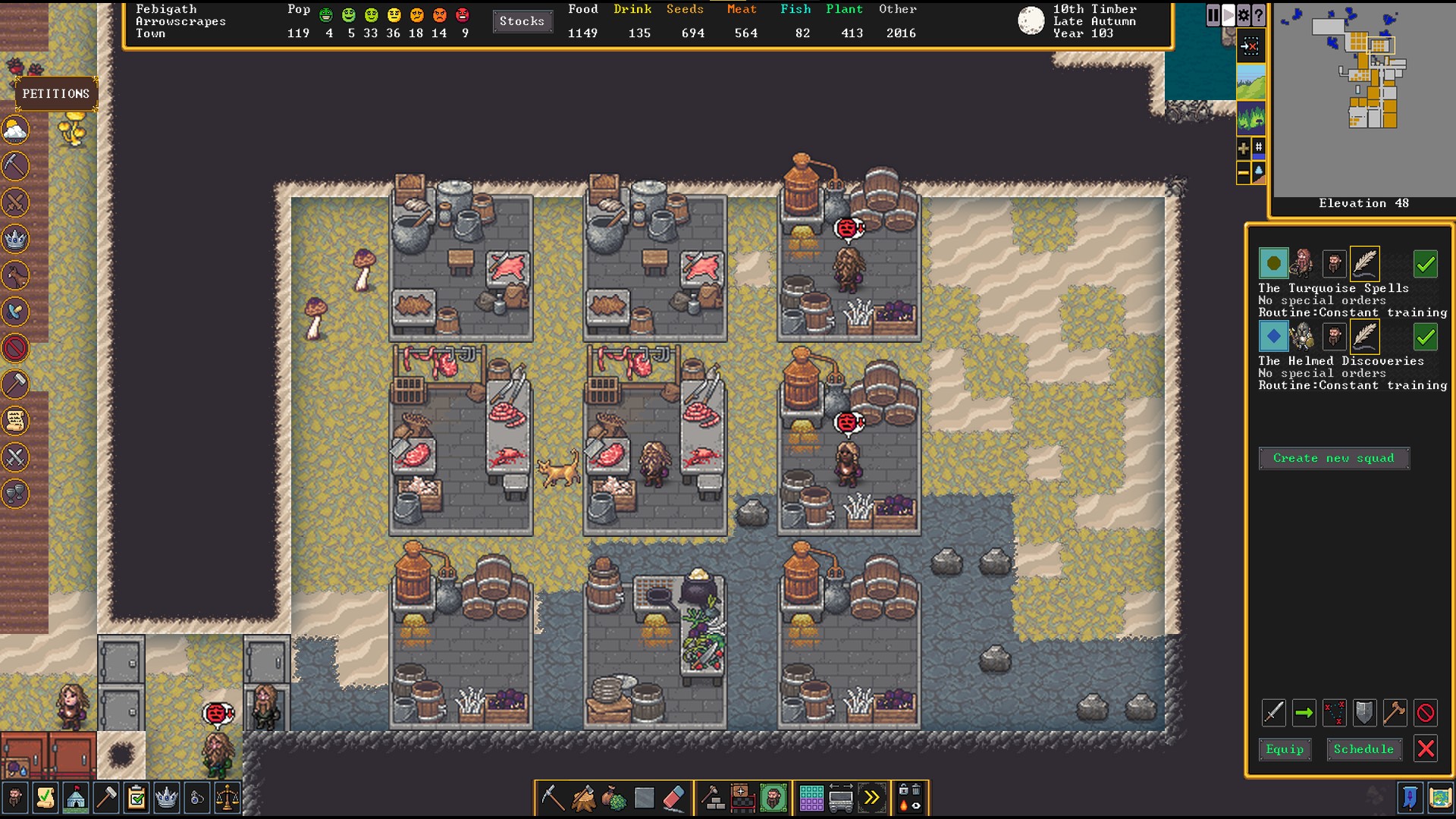

Leaving that delicate balancing act of fortress management aside, the Steam release's most obvious changes are visual. Until now, Dwarf Fortress has been an ASCII-based enterprise, requiring mods for any imagery more engaging than a letter "D" facing you in martial combat.
You're responsible for every component of your fledgling dwarven society, and there are a hell of a lot of components.
Dwarf Fortress now boasts its own lovely tile-based graphics. They're charming enough to look at, your dwarves' physical features realized in sprites. The visual overhaul joins an expanded soundtrack, which moves between the gruff warmth of dwarven work songs, plaintive acoustic plucking, and haunting atmospherics. It nails the vibe—sometimes whimsical, sometimes punishing, often doomed.
In terms of playability, the biggest changes involve the interface and controls. Limited before to keyboard input, Dwarf Fortress now has native mouse support. Clicking to designate/interact with/inspect things is a much-needed and welcome change, but the new UI struggles to accommodate every aspect of this bottomless game.
Hard-won wealth
Dwarf Fortress's daunting reputation is not unearned. In building and managing your new mountainhome, the game does very little work for you. It's just you, a bunch of menus, and whatever ragged scrap of self-preservation instinct your dwarves can muster.
You're responsible for every component of your fledgling dwarven society, and there are a hell of a lot of components. Every inch of every room and hallway is one you told your dwarves to dig. If they grow a crop, you told them where to plant the seed. And if they're lost to any one of Dwarf Fortress's countless dangers—whether it's goblin hordes, were-gazelles, or an accidental cave-in—it's because you failed to protect them.
Dwarf Fortress is a wonder of procedural worldbuilding. It's a storytelling toolbox calling itself a game.
And you will fail. A lot! That's expected. Dwarf Fortress's guiding ethos, as the game itself tells you, is that losing is fun. It has no victory condition. There's no winning. In the end, every fortress you make is doomed, whether you're forced to abandon it or choose to.
Instead, your victories are measured in lessons learned and knowledge deployed. However long your fortress lasts, all its achievements are yours, built by hand and wrested with effort from atop a vertical learning curve.
Lasting success in Dwarf Fortress means navigating production lines, military defense, civic planning—so many avenues of potential toil that, after 13 years of play, there are entire fields of Dwarven industry I haven't touched. There's real pride that comes with internalizing a new piece of Dwarf Fortress logic, like mastering some eldritch spell. Imagine how powerful I'll be when I'm proficient in Dwarven hydraulics.
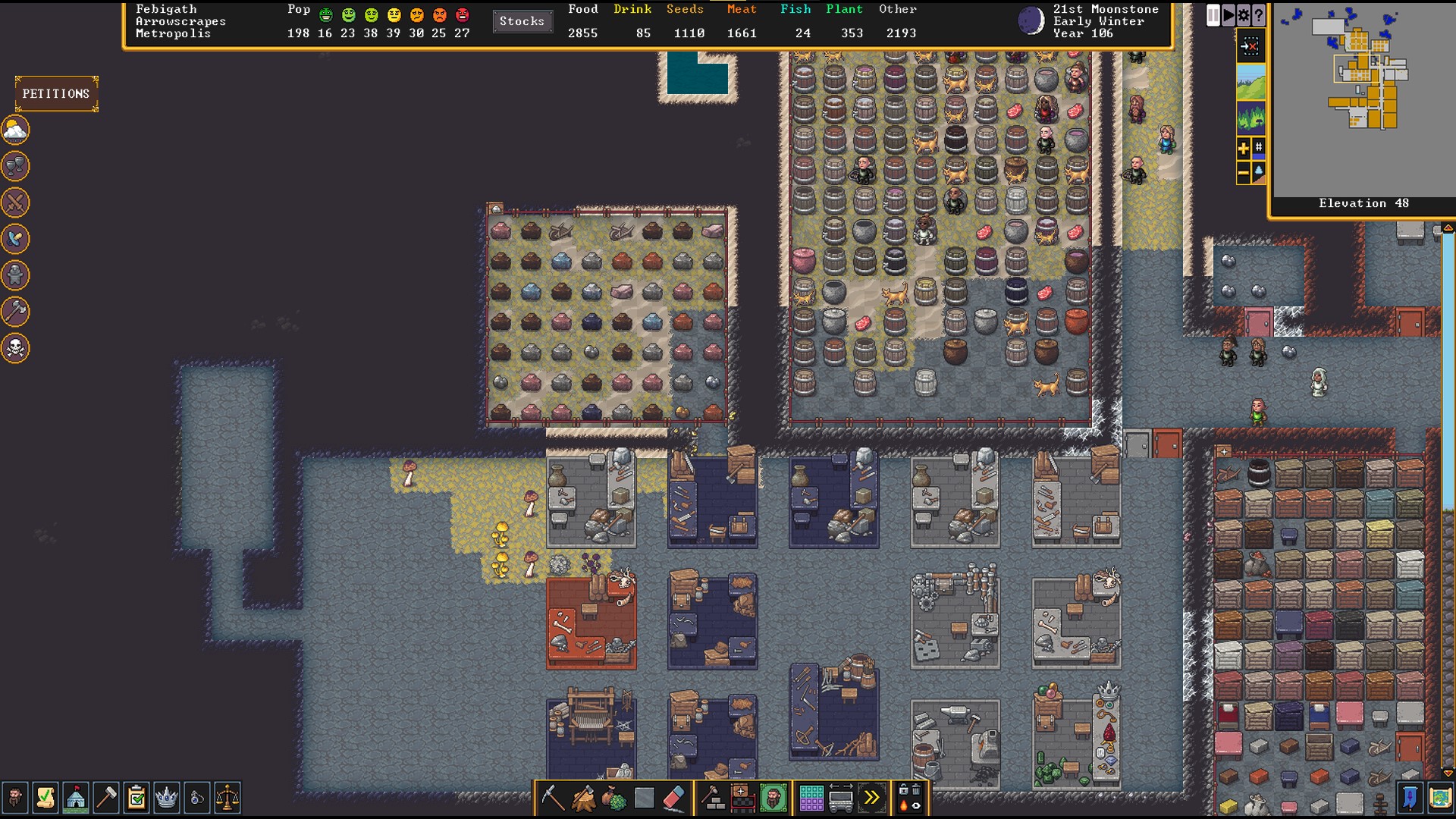
I won't blame anyone for reading all that and saying, "Nah, I'm all right." I understand. But for that kind of wonderful sicko who might be feeling a glimmer of wild joy, let me say it plain. Beneath its layered strata of arcane menus and mechanics, Dwarf Fortress is a rare treasure. You just need to be willing to dig.
Legends in the making
But that's just half the magic. It's a convincing act, but Dwarf Fortress is only masquerading as a colony sim. As well as the logistics and managerial decision-making, Dwarf Fortress is a wonder of procedural worldbuilding. It's a storytelling toolbox calling itself a game.
Each dwarf has their own unique set of physical characteristics, down to the plaiting of their beards and the appearance of their earlobes. They have their own personality traits, preferences, goals, mannerisms. So do their pets, their livestock, the goblin invader trying to stick a spear in their ribs. Every object has its own generated features, every engraving its own randomized image.
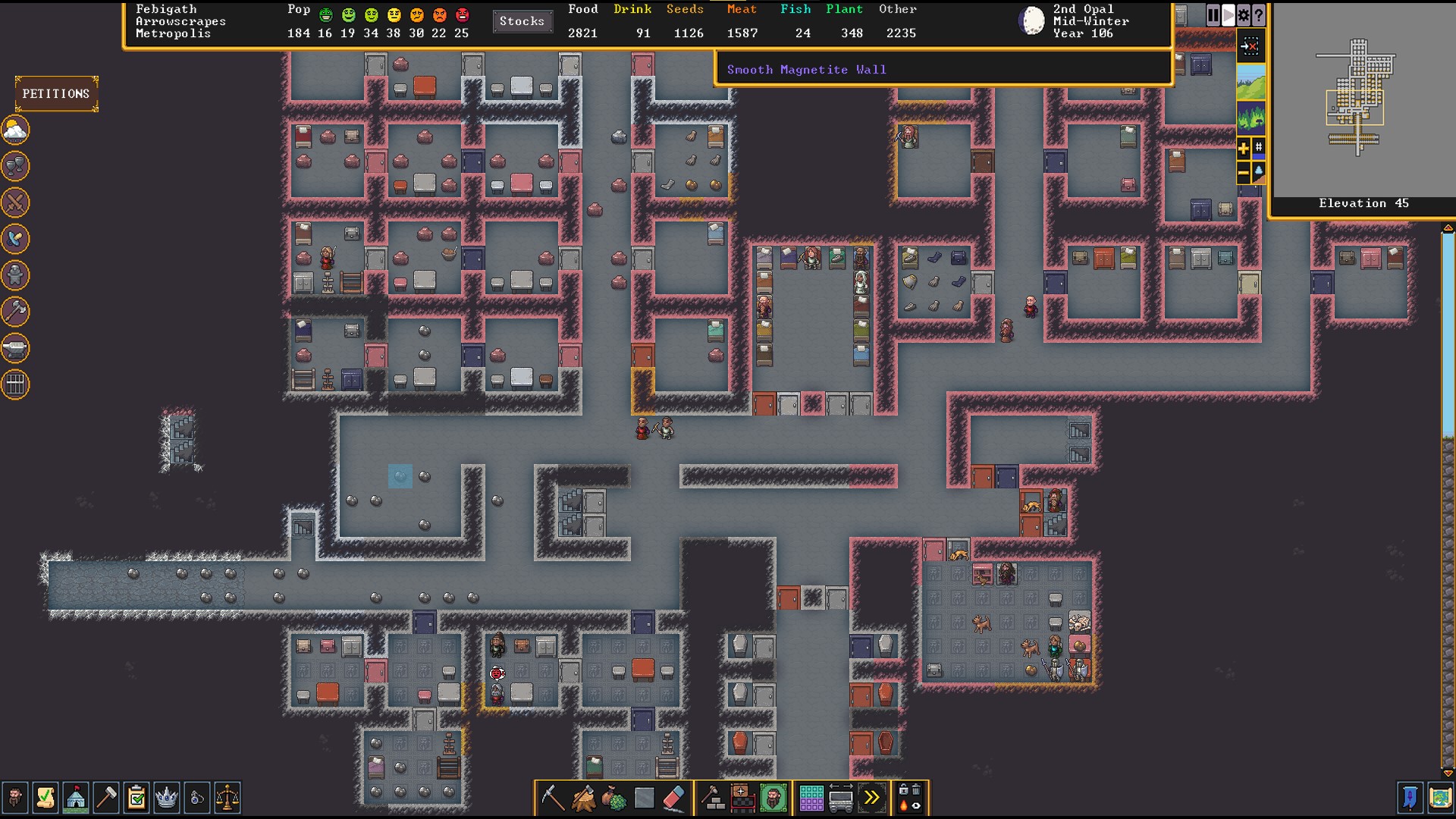
The absurd depth of this simulation gives Dwarf Fortress a frankly unreasonable amount of detail.
Dwarf Fortress drapes every piece of gameplay in procedural simulation dozens of layers deep. And it begins from your first moment of play: it builds you a world. When you click the "Create a New World" button, it would be impressive enough to watch the sculpting of a unique geography, new continental landmasses seeded with simulated biomes and water tables. Dwarf Fortress starts writing history.
Decades pass in seconds, your new world entering its first age as demigods walk the earth. Mortal civilizations sprout, their settlements uncoiling roadways as they flourish, shrinking as they fall to ruin. Throughout this, Dwarf Fortress is simulating thousands of events, mapping relationships between historical figures and legendary artifacts, charting migrations and death tolls.
When I send out a fresh caravan of dwarves, it's not in a vacuum. It's the latest chapter of a continuing history. Behind what's on-screen, my dwarves are connected to a sprawling, historic thought web. It's referenced when they engrave murals of past events, in the poems they learn and recite—each complete with its own rules of form and meter.
The absurd depth of this simulation gives Dwarf Fortress a frankly unreasonable amount of detail. It barely affects mechanical gameplay in any real way. But it doesn't need to. That ludicrous, near-pathological intricacy is what's kept me fascinated for over a decade.
Thanks to that volume of detail, I can believe so much more easily that there's a world happening off-screen—that what I'm seeing is a small piece of something alive. Every scrap of procedural flavor text is potential space for forming an attachment, transforming the shuffling pixels on-screen into stories worth sharing. You'll see the result when any two Dwarf Fortress players meet: stories are the basic unit of exchange.
Fine quality
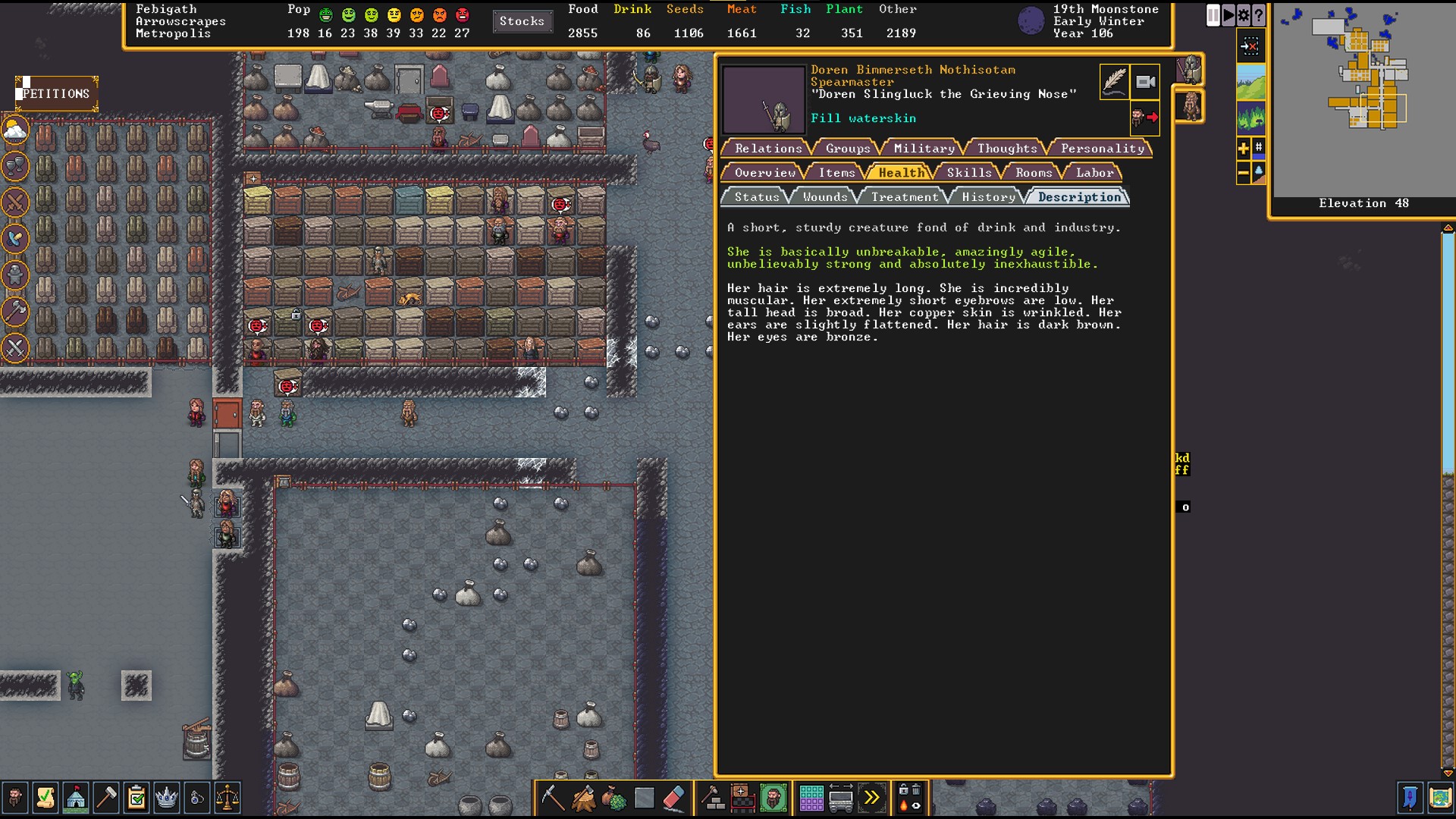
Thanks to the modernization of Dwarf Fortress's Steam release, we'll hopefully see a new generation of players swapping fortress stories. Overall, it's a success. But Dwarf Fortress doesn't enter its new era without some stumbling.
For me, something was lost in the UI translation. Once you were acclimatized, the classic version's keyboard-driven interface followed a reliable logic, keeping the visual playspace cleanly delineated from menu information.
The new interface feels scattered in comparison. More things are clickable and accessible, but without any real logic regarding where they're placed. Even after a few dozen hours with it, the level of visual noise can get overwhelming, especially in a busier fortress. All told, I found it a price well worth paying, though—I can’t imagine I'd go back.
As ever, Dwarf Fortress is a game you have to meet more than halfway.
Jumping to Steam has also meant the temporary loss of Dwarf Fortress's roguelike Adventure mode, though it's due to return in the future. Where the Steam release leaves me with my strongest reservations, though, is one of its most crucial additions: its tutorial.
It's the first attempt at a Dwarf Fortress introductory experience, guiding you through the most basic necessities of getting a fortress started. A brief but serviceable primer for the controls, it does have in-game help menus offering additional direction. But while no Dwarf Fortress tutorial could ever hope to be comprehensive, I can't help but feel its explanations are a little too vague, its warnings a little too sparse.
You could easily go from the tutorial to starting a new fortress only to watch as giant mantises devour your dwarves because you weren't warned about untamed wilds. The tutorial takes for granted that you'll be hitting up guides on the Dwarf Fortress wiki once it's finished. And you should; the wiki is every player's constant and faithful companion. The tutorial could at least point in its direction, to get you acquainted early.
As ever, Dwarf Fortress is a game you have to meet more than halfway. It requires a voluntary buy-in: a willingness to teach yourself its rules, to take the abstract details of its generated worldbuilding and craft your own mythology. But now, the first steps in exploring its depths are a little easier to take. If you're willing, it's an experience you won't match anywhere else. I'm in for another 13 years, at least.
A worthy revision of the legendary settlement sim. Slightly less impenetrable, just as engrossing.
Lincoln has been writing about games for 11 years—unless you include the essays about procedural storytelling in Dwarf Fortress he convinced his college professors to accept. Leveraging the brainworms from a youth spent in World of Warcraft to write for sites like Waypoint, Polygon, and Fanbyte, Lincoln spent three years freelancing for PC Gamer before joining on as a full-time News Writer in 2024, bringing an expertise in Caves of Qud bird diplomacy, getting sons killed in Crusader Kings, and hitting dinosaurs with hammers in Monster Hunter.
